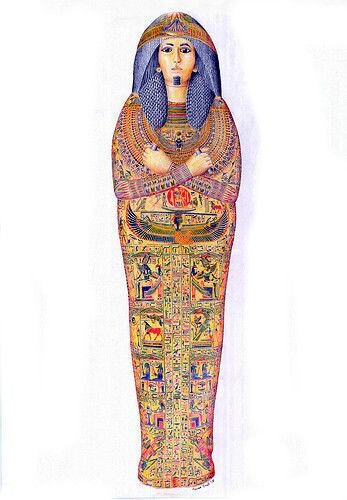![3D printed replica of an Egyptian mummy’s vocal tract [Source: BBC]](https://fabbaloo.com/wp-content/uploads/2020/05/image-asset_img_5eb08ba1f1c01.jpg)
UK researchers have used 3D printing to reproduce the voice of a long-dead Egyptian.
The subject of the research was Nesyamun, a priest who lived over 3,000 years ago during the reign of Egyptian Pharaoh Rameses IX in Thebes. Nesyamun, whose name means “The one belonging to the God Amun”, was mummified in the traditional ancient Egyptian manner around 1060BC, and remained undisturbed until the early 1800’s when the mummy was extracted by eager English scientists of the day. The mummy ended up being placed in The Leeds Museum, where it fortunately survived a bomb attack in WWII.
![Nesyamun, an Egyptian mummy [Source: Tomohawk - Own work, CC BY-SA 3.0]](https://fabbaloo.com/wp-content/uploads/2020/05/image-asset_img_5eb08ba23d362.jpg)
The mummy has an extraordinarily well-preserved vocal tract, and this gave researchers the idea of attempting to reproduce the voice.
Their approach was to 3D scan the mummy to obtain a 3D model of the vocal tract, and then 3D printing a full-size representation of it. By pushing air through the 3D print, they were able to hear a sound that might have been close to what Nesyamun himself might have made.
You can hear the sound in this clip from the BBC:
It’s not particularly impressive, as it is a single tone, and rather sheep-like. That’s likely because the rigid 3D print can produce only one sound — it doesn’t move like a human vocal tract might.
However, the researchers say they are interested in refining the approach to be able to reproduce complete sentences. To accomplish this, I suspect they will have to 3D print the vocal tract in a material that has similar flexibility to the human equivalent, and employ motors to make it move in ways a human might do.
They’ll also have to include lips, teeth, tongue and other elements that affect the sound emerging from a mouth. If they can build all that and somehow control it all synchronously, they may have a chance at reproducing an actual, complete voice.
That would be quite a feat: having the ability to produce a 3D printed device that could reproduce someone’s voice to a high degree of accuracy. The process could be done on other well-preserved bodies, and perhaps even on living humans by 3D scanning their vocal tract.
It may even become possible for one to leave a legacy for those in the future by preparing a matching voice.
I’m not sure who would want such a thing, but I am certain someone would.
Via BBC

